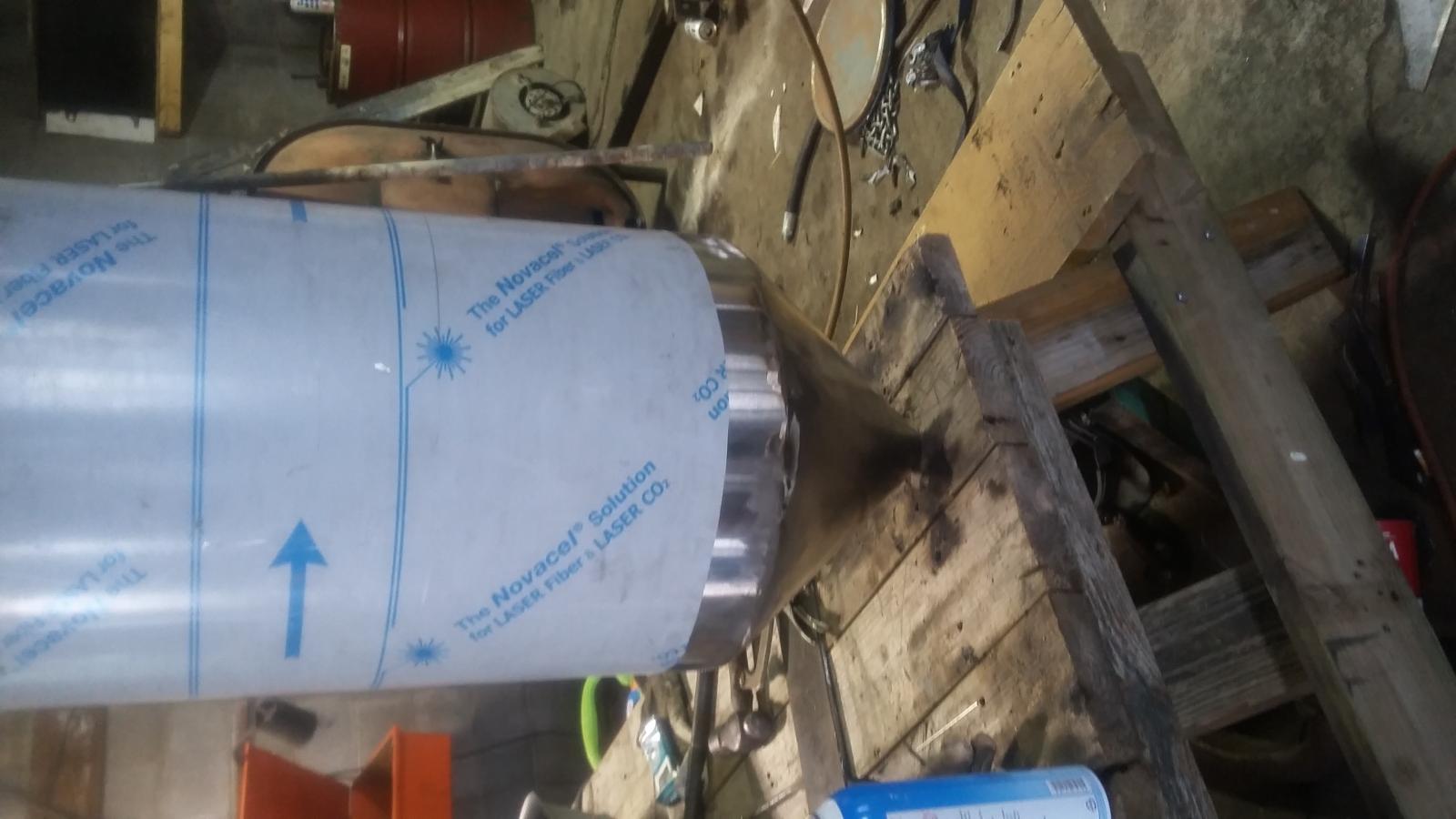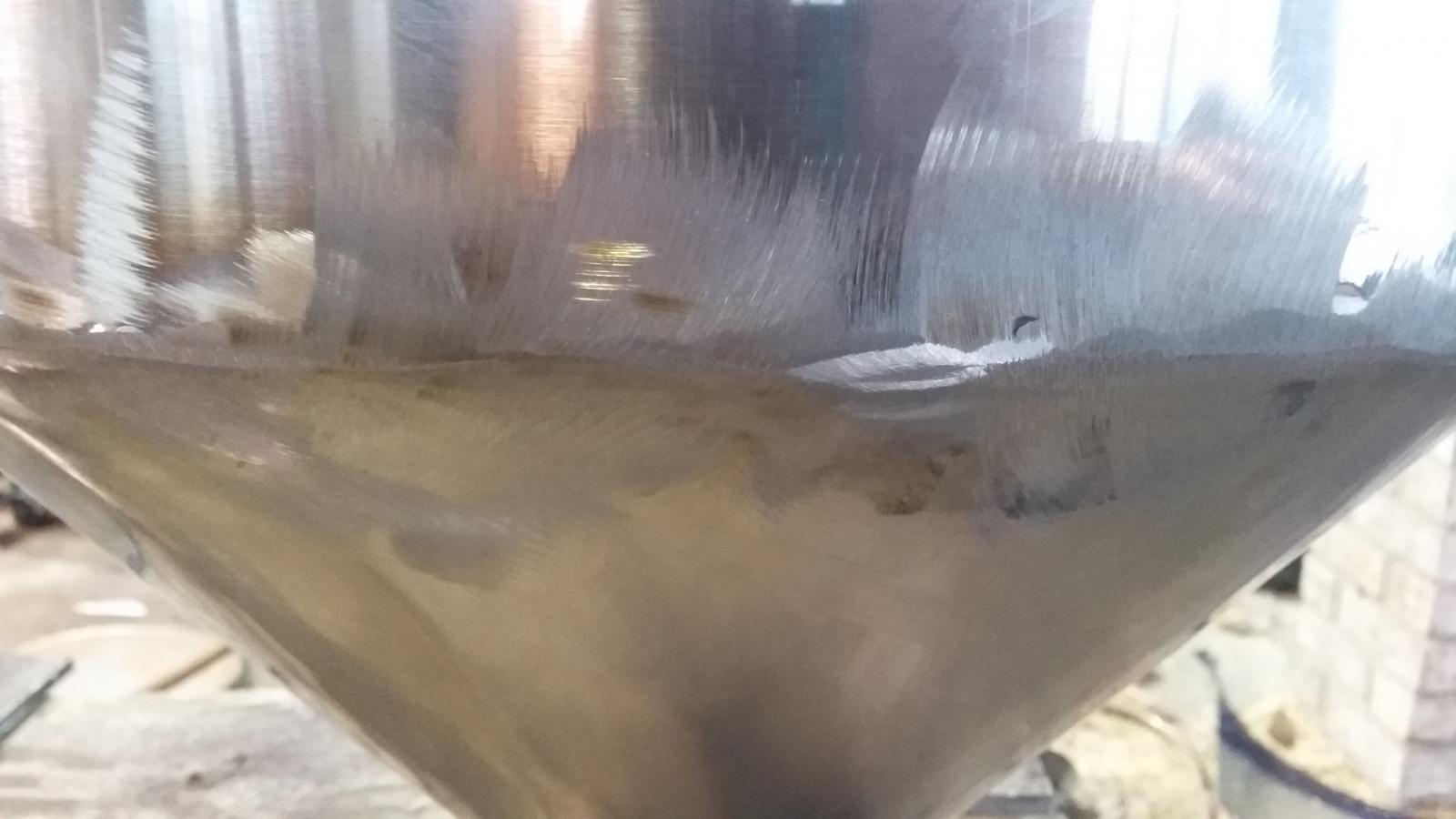- Joined
- Apr 25, 2016
- Messages
- 36
- Reaction score
- 23
Here are a couple more photos of the progress hopefully these ones upload correctly


I have sanded down and rounded off the weld on the outside for the seam where the cone meets the cyliner. I am hoping to electropolish the whole thing when done. Which will get rid of the grind marks eliminate the need for passivation and make it really shiney lol


I have sanded down and rounded off the weld on the outside for the seam where the cone meets the cyliner. I am hoping to electropolish the whole thing when done. Which will get rid of the grind marks eliminate the need for passivation and make it really shiney lol
















